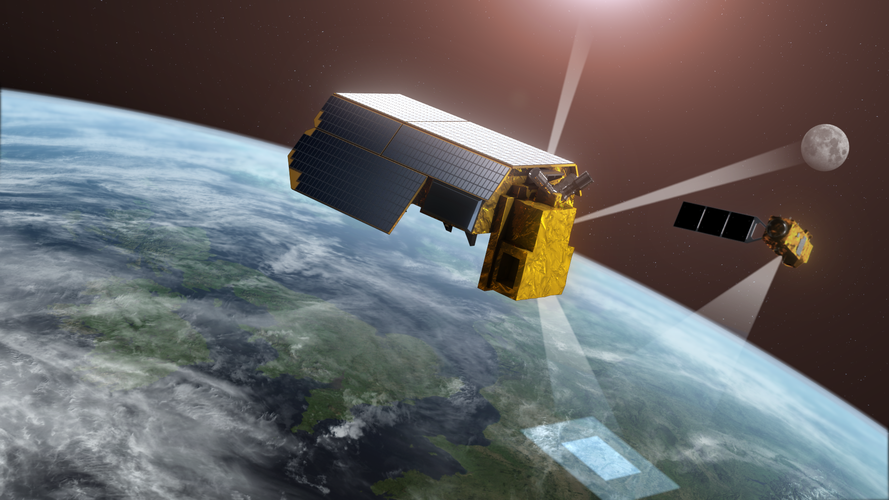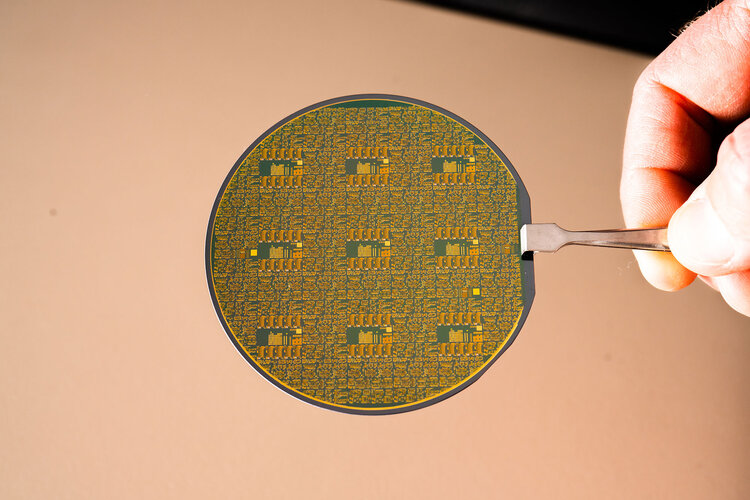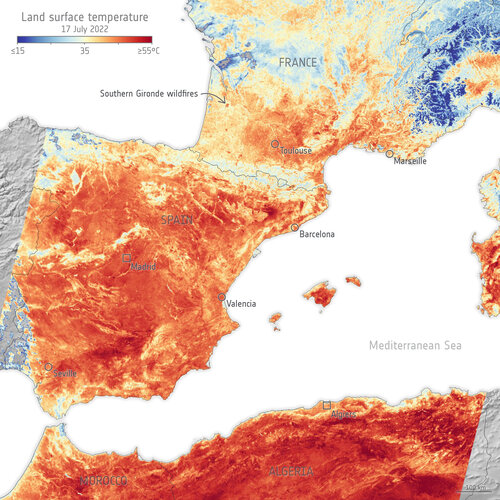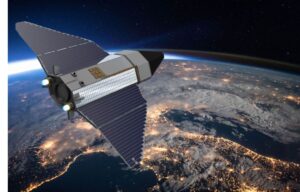Stress tests: making a hardy Webb
Wednesday, 20 July 2022 11:12 As the world marvels over the first public images from the James Webb Space Telescope, Webb Deputy Project Manager for Technical Verification Paul Geithner is able to recall another first-of-its-kind moment: when the Webb team thought for a brief - blessedly brief - moment it had actually broken part of the observatory.
A portion of the Webb structure, custom-made of graphite epoxy composi
As the world marvels over the first public images from the James Webb Space Telescope, Webb Deputy Project Manager for Technical Verification Paul Geithner is able to recall another first-of-its-kind moment: when the Webb team thought for a brief - blessedly brief - moment it had actually broken part of the observatory.
A portion of the Webb structure, custom-made of graphite epoxy composi Laser Terminal Bound for ISS arrives at Goddard for testing
Wednesday, 20 July 2022 11:12 Soon the International Space Station will get a laser light terminal: Beams of invisible infrared light will soar through the atmosphere, capable of communicating pictures and videos from astronauts and experiments on the space station, thanks to NASA's brand-new laser terminal called ILLUMA-T (pronounced "ill-LOO-mah-TEA").
In May, ILLUMA-T (formally the "Integrated Laser Communications R
Soon the International Space Station will get a laser light terminal: Beams of invisible infrared light will soar through the atmosphere, capable of communicating pictures and videos from astronauts and experiments on the space station, thanks to NASA's brand-new laser terminal called ILLUMA-T (pronounced "ill-LOO-mah-TEA").
In May, ILLUMA-T (formally the "Integrated Laser Communications R Another success for ANYWAVES
Wednesday, 20 July 2022 11:12 In early January, Airbus Defence and Space announced that it had been selected by the FrancoAmerican start-up Loft Orbital to supply more than 15 satellite platforms, a contract that, according to French Minister of the Economy Bruno Le Maire,"demonstrates the vibrancy of New Space start-ups in France and the synergies throughout the space ecosystem when it comes to innovation on an industrial s
In early January, Airbus Defence and Space announced that it had been selected by the FrancoAmerican start-up Loft Orbital to supply more than 15 satellite platforms, a contract that, according to French Minister of the Economy Bruno Le Maire,"demonstrates the vibrancy of New Space start-ups in France and the synergies throughout the space ecosystem when it comes to innovation on an industrial s Sidus Space increases deliverables to Teledyne Technologies
Wednesday, 20 July 2022 11:12 Sidus Space, Inc. (NASDAQ:SIDU), a Space-as-a-Service satellite company focused on mission critical hardware manufacturing; multi-disciplinary engineering services; satellite design, production, launch planning, mission operations; and in-orbit support, is pleased to announce its growing relationship with Teledyne Marine, a part of Teledyne Technologies, Inc. (NYSE:TDY), following a noteworthy Q
Sidus Space, Inc. (NASDAQ:SIDU), a Space-as-a-Service satellite company focused on mission critical hardware manufacturing; multi-disciplinary engineering services; satellite design, production, launch planning, mission operations; and in-orbit support, is pleased to announce its growing relationship with Teledyne Marine, a part of Teledyne Technologies, Inc. (NYSE:TDY), following a noteworthy Q TRUTHS shines
Wednesday, 20 July 2022 11:00
Satellites are essential for delivering key data to understand and monitor how the climate crisis is impacting our world, but, in turn, decision-makers need to be confident in the data they use for mitigation strategies and policymaking. TRUTHS, a new ESA mission, will do just this – and, now having passed an important milestone, it is one step closer to becoming a reality.
Impulse and Relativity announce proposal for joint Mars landing mission
Wednesday, 20 July 2022 10:09
Two startups, each yet to fly their first missions, said July 19 they are collaborating on a Mars lander mission they claim could launch as soon as 2024.
The post Impulse and Relativity announce proposal for joint Mars landing mission appeared first on SpaceNews.
US environmental study launched for Thirty Meter Telescope
Wednesday, 20 July 2022 08:02
From Blu-Ray players to Earth orbit
Wednesday, 20 July 2022 07:39 Image:
From Blu-Ray players to Earth orbit
Image:
From Blu-Ray players to Earth orbit Feeling the heat from space
Wednesday, 20 July 2022 06:49
With searing temperatures and a string of record highs being smashed across western Europe, the current heatwave is all too apparent. Extreme heat warnings have been issued in several countries including France, Spain and Portugal, and deadly wildfires have forced thousands to flee their homes. The satellite images here are an example of how the crisis is being viewed by satellites orbiting Earth.
First spacewalk for Samantha Cristoforetti
Wednesday, 20 July 2022 06:00
On 21 July 2022, ESA astronaut Samantha Cristoforetti will head outside the International Space Station on a spacewalk alongside cosmonaut Oleg Artemyev. It will be Samantha’s first spacewalk, and the first conducted by a European woman.
Mars Express peers into Mars' 'Grand Canyon'
Wednesday, 20 July 2022 05:55
The latest image release from ESA’s Mars Express takes us over two ruptures in the martian crust that form part of the mighty Valles Marineris canyon system.
UK’s ‘Astra Carta’ movement sees space sustainability as chance to lead
Wednesday, 20 July 2022 05:00
The U.K. sees satellite servicing, debris removal and orbital sustainability as an opportunity to emerge as a major global space power.
The post UK’s ‘Astra Carta’ movement sees space sustainability as chance to lead appeared first on SpaceNews.
The UK’s ‘Astra Carta’ moment: Building a Space Sustainability Growth Platform
Wednesday, 20 July 2022 05:00
The U.K. sees satellite servicing, debris removal and orbital sustainability as an opportunity to emerge as a major global space power.
The post The UK’s ‘Astra Carta’ moment: Building a Space Sustainability Growth Platform appeared first on SpaceNews.
NASA selects Falcon Heavy to launch Roman Space Telescope
Tuesday, 19 July 2022 22:10
NASA has selected SpaceX to launch the Nancy Grace Roman Space Telescope on a Falcon Heavy, but at a price significantly higher than previous agency contracts.
The post NASA selects Falcon Heavy to launch Roman Space Telescope appeared first on SpaceNews.
ESA funds Skimsat demonstrator study for VLEO
Tuesday, 19 July 2022 19:12
The European Space Agency has awarded funds to develop a demonstrator for Skimsat, a small satellite platform designed to operate in very low Earth orbit (VLEO).
The post ESA funds Skimsat demonstrator study for VLEO appeared first on SpaceNews.

